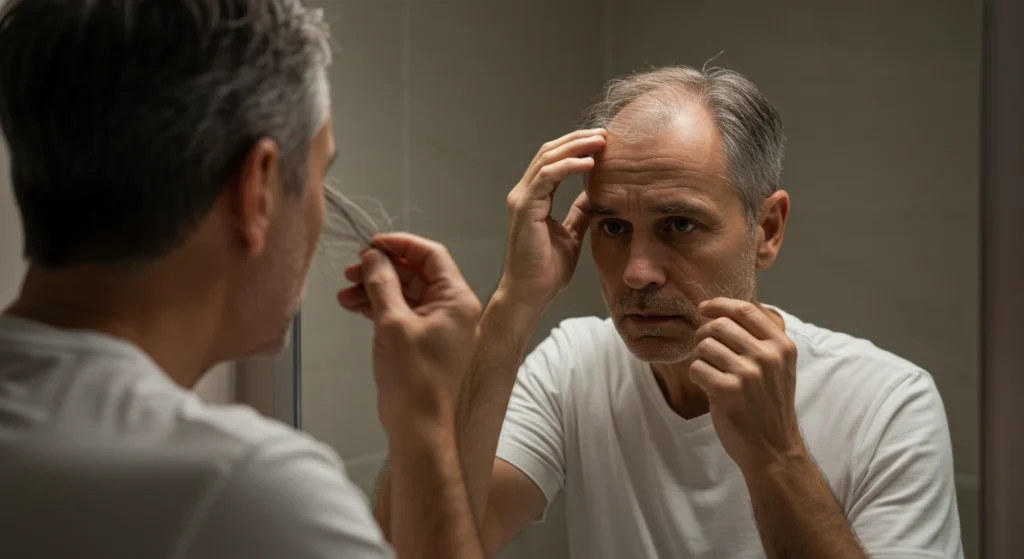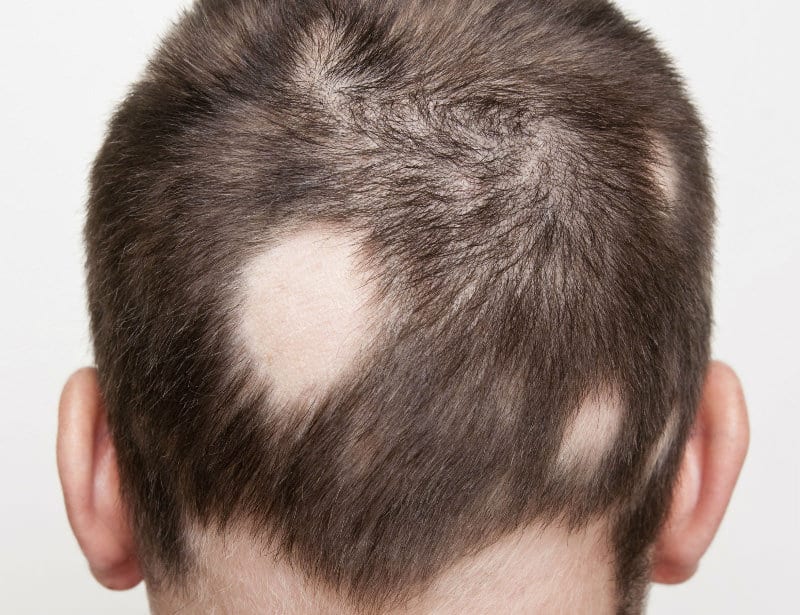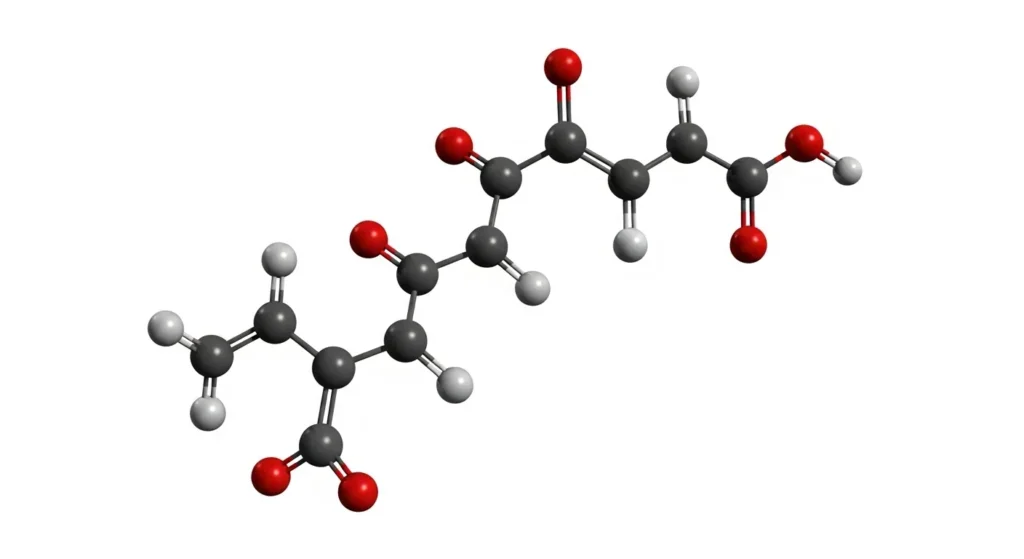Are you noticing hairfall in men, especially in the shower, on your pillow, or when styling your hair? You’re not alone. This guide explains why men lose hair, the most effective treatments, and what to expect during recovery.
Whether you’re seeing early thinning or advanced baldness, you’ll learn how to regain hair and confidence with trusted medical insights, expert advice, and clear next steps.
What Is Hairfall in Men?

Hairfall in men refers to excessive hair shedding or visible thinning that exceeds normal daily loss. While it’s typical to lose 50–100 hairs a day, anything beyond that could point to an underlying condition.
There are several types of male hair loss:
- Androgenetic Alopecia (Male Pattern Baldness): The most common form, caused by genetics and hormones.
- Telogen Effluvium: Stress-related hair shedding, often temporary.
- Alopecia Areata: An autoimmune condition causing patchy bald spots.
- Traction Alopecia: Hair loss from tight hairstyles or repeated pulling.
One simple way to assess your condition is the Zone Hair Pull Test—a technique used by dermatologists to determine whether the shedding is active or chronic.
Key Causes of Hairfall in Men
1. Genetics & DHT (Male Pattern Baldness)
Male pattern baldness is largely hereditary. It’s linked to the hormone DHT (dihydrotestosterone), which shrinks hair follicles over time. This leads to thinner, weaker hair and eventual baldness—usually in a predictable pattern (the Norwood scale).
Common signs include:
- Receding hairline
- Thinning crown
- Gradual progression over the years
2. Lifestyle & Nutritional Factors
Poor lifestyle habits can speed up hair loss, even if genetics are involved.
Key triggers include:
- Nutrient deficiencies: Low iron, zinc, vitamin D, or biotin.
- Poor diet: High sugar intake increases inflammation and oxidative stress.
- Sleep deprivation & chronic stress disrupt the hair growth cycle.
Pro Tip: A balanced diet rich in leafy greens, protein, omega-3s, and hydration supports hair health.
3. Medical & Hair-Care Related Causes
Other causes may include:
- Telogen effluvium after illness, surgery, or emotional shock
- Overstyling, frequent bleaching, or tight hairstyles
- Autoimmune disorders like alopecia areata
- Fungal infections or dandruff can cause scalp inflammation

Diagnosing Hairfall: Tests & Tools
Correct diagnosis is key to effective treatment.
Common diagnostic methods:
- Scalp exam using dermoscopy or trichoscopy
- Hair pull test or Zone Hair Pull Test
- Blood tests for iron levels, thyroid, vitamin D, and testosterone
- Scalp biopsy in unclear cases
Expert Tip: Consult a certified dermatologist or trichologist for a personalized diagnosis.
Effective Treatment Options
1. FDA‑Approved Medications
- Minoxidil (Topical): Improves blood flow and follicle health. Results may appear after 3–6 months.
- Finasteride (Oral): Blocks DHT. Proven to slow or stop male pattern baldness.
⚠️ Side effects can include reduced libido or scalp irritation. Always consult a specialist.
2. Combination & Advanced Therapies
- Low-Level Laser Therapy (LLLT): Boosts follicle activity.
- Microneedling: Promotes absorption of topical treatments.
- PRP Therapy: Platelet-Rich Plasma injections use your own blood to stimulate hair growth.
- Stem Cell Research: Early studies show potential, but it’s not mainstream yet.
3. Surgical Options
Hair transplant surgery—like FUE (Follicular Unit Extraction)—can restore hair permanently for eligible candidates.
- Natural results are achieved when done by experienced surgeons
- Short recovery (1–2 weeks)
- Results become visible within 6–12 months
4. Lifestyle & Home Care
- Supplements: Zinc, biotin, collagen
- Gentle hair care: Avoid heat styling, harsh shampoos
- Scalp massage with rosemary or peppermint oil
- Manage stress: Yoga, mindfulness, therapy

Recovery Timeline & Aftercare
Here’s what you can expect after starting treatment:
| Treatment Type | First Signs of Results | Full Results | Maintenance Required |
|---|---|---|---|
| Minoxidil | 2–3 months | 6–12 months | Daily use |
| Finasteride | 3–6 months | 12 months | Daily use |
| PRP Therapy | 1 month | 4–6 sessions | Occasional boosters |
| FUE Transplant | 2–4 months | 12–14 months | Low |
FAQs
How much hairfall is normal for men?
Up to 100 strands daily. More than that, especially with visible thinning, warrants a checkup.
Can stress really cause hair loss in men?
Yes, stress-induced telogen effluvium is a common, temporary form of shedding.
Are natural remedies effective?
They may support hair health, but aren’t substitutes for medical treatments.
Is finasteride safe long-term?
Studies show it’s generally safe, but it should be used under medical supervision.
Should I see a trichologist or dermatologist?
A dermatologist with hair restoration experience is usually the best option.
When to Seek Expert Help
Seek professional guidance if you notice:
- Rapid or patchy shedding
- Bald spots or inflammation
- Scalp discomfort, pain, or scaling
- Emotional distress from hair loss
Conclusion & Next Steps
Hairfall in men is more common than you think—and very treatable. Whether you’re facing early signs or advanced loss, there’s hope through modern treatments and expert care. From medications and PRP to lifestyle fixes and transplant solutions, you have options.
Book a consultation with Dr. Rana Irfan, an ABHRS and ISHRS certified surgeon in Islamabad today to explore customized hair restoration options backed by science, experience, and results.
